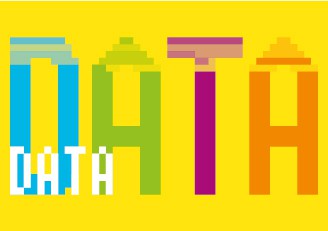10 things you need to know about data
As our world rapidly becomes digitized, data is all around us and in the news every day. Along with this growth comes a lexicon of new jargon. Taking a tour through the terabytes and petabytes in and out of the cloud, and investigating cyber criminals is AECOM’s Chief Information Security Officer Emily Heath.
 Volumes of data are multiplying at the fastest rate in history. We generate it, process it, store it, consume it, correlate it and trust it to make life and business decisions. The data landscape has changed dramatically during the past decade due to the growing sophistication of technology and it is crucial for business to keep up.
Volumes of data are multiplying at the fastest rate in history. We generate it, process it, store it, consume it, correlate it and trust it to make life and business decisions. The data landscape has changed dramatically during the past decade due to the growing sophistication of technology and it is crucial for business to keep up.
The first rumblings of this explosion began 20 years ago with the launch of the internet which changed our relationship with data forever. Data became available to all, and technological advancement took on a world of its own. The rest, as they say… is history.
Here’s a quick guide to our digital world.
1. When did data get big?
There are many definitions of big data. I like to think of it in its simplest terms, data that is extensive, and therefore complex and difficult to process. As a result of the growing volumes and complexity of data, technology was forced to change how we process and make sense of it. That’s why so-called ‘big data’ has caused a stir. The characteristics of big data are often summed up as the five ‘v’s — volume, variety, velocity, veracity and value.
2. Where did the name come from?
The term ‘big data’ was coined back in 1997 by NASA scientists who were describing the challenges they faced with visualizing huge volumes of data when computer systems did not have enough memory to fit the data on local disks.
3. What do I need to know about the cloud?
 Used as a metaphor, the cloud is a place somewhere ‘out there’ where data, computing power and systems are stored. You don’t need to own the hardware because it is an internet-based service which provides on-demand access to computing services and data storage. The first business iteration of the cloud came when tech companies began offering their software as a service (SaaS) business model in the early 2000s.
Used as a metaphor, the cloud is a place somewhere ‘out there’ where data, computing power and systems are stored. You don’t need to own the hardware because it is an internet-based service which provides on-demand access to computing services and data storage. The first business iteration of the cloud came when tech companies began offering their software as a service (SaaS) business model in the early 2000s.4. How did the cloud evolve?
 Cloud offerings became increasingly sophisticated in areas such as enterprise resource planning (a business management software for integrating applications) and software on demand, which hit the market offering high-volume data consumption, processing capability and reporting functions.
Cloud offerings became increasingly sophisticated in areas such as enterprise resource planning (a business management software for integrating applications) and software on demand, which hit the market offering high-volume data consumption, processing capability and reporting functions.5. Where is all this data coming from?
6. So how can this help my business?
7. So what is the Internet of Things
 By 2014, the advancements in technology had grown big data yet further. Computers, and therefore data, appeared in household appliances and ‘things’ that we use in our everyday lives. We not only had a network of computers that we relied heavily on in almost every part of our connected lives, we also had a network of physical objects that contain embedded technology, which we were teaching to talk to each other — hence the Internet of Things (IoT). Think about your ability to control cameras, thermostats, even cars from mobile apps and devices — those are the ‘things.’ In 2014 Gartner estimated there were 3.7 billion connected ‘things’ in use around the world. That number rose to 4.9 billion by 2015.
By 2014, the advancements in technology had grown big data yet further. Computers, and therefore data, appeared in household appliances and ‘things’ that we use in our everyday lives. We not only had a network of computers that we relied heavily on in almost every part of our connected lives, we also had a network of physical objects that contain embedded technology, which we were teaching to talk to each other — hence the Internet of Things (IoT). Think about your ability to control cameras, thermostats, even cars from mobile apps and devices — those are the ‘things.’ In 2014 Gartner estimated there were 3.7 billion connected ‘things’ in use around the world. That number rose to 4.9 billion by 2015.8. How do smart cities fit into all this?
9. So is data bursting with opportunities for the construction industry?
 Yes, it absolutely is. Data forms a critical component in intelligent design and build. Data leads to understanding our environmental, social and economic challenges and being able to build resilience into everything we do. We can design cities and buildings to consider water supply challenges that enable us to build in drought resilience and build security into our critical infrastructure to predict and anticipate the most likely points of attack or failure, whether that be environmental attacks, physical attacks or cyber attacks. Data is opportunity.
Yes, it absolutely is. Data forms a critical component in intelligent design and build. Data leads to understanding our environmental, social and economic challenges and being able to build resilience into everything we do. We can design cities and buildings to consider water supply challenges that enable us to build in drought resilience and build security into our critical infrastructure to predict and anticipate the most likely points of attack or failure, whether that be environmental attacks, physical attacks or cyber attacks. Data is opportunity.





